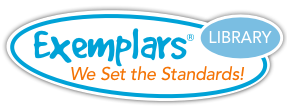Grade 3 - Geometry Unit
Standards covered:
- 3.6 Geometry and measurement
-
3.6A
Classify and sort two- and three-dimensional figures, including cones, cylinders, spheres, triangular and rectangular prisms, and cubes, based on attributes using formal geometric language.
-
3.6B
Use attributes to recognize rhombuses, parallelograms, trapezoids, rectangles, and squares as examples of quadrilaterals and draw examples of quadrilaterals that do not belong to any of these subcategories.
The Geometry Unit involves analyzing the defining attributes of 2-dimensional shapes and 3-dimensional solids in order to answer questions such as:
- What characteristics do all of the shapes in this category possess?
- How can you create additional examples to fit into the same category? Defend why your examples belong in the category.
- How can you create example shapes that do NOT fit into the category? Defend why your examples do NOT fit within the category.
Summative Assessment Task
Students name or draw five different quadrilaterals that can be made from 24 rocks and 24 sticks.
Instructional Tasks/Formative Assessments
Students determine the number of pennies and straws needed to make a series of shapes.
Using gumdrops and toothpicks, students create four different shapes and name three shapes.
Students draw and name three different triangles using dots for the vertices and lines for the sides.
Students determine how many quadrilaterals can be made using lines for sides and dots for vertices.

The N/A classification refers to TEKS Standards that cannot be assessed through problem solving.
For this reason, tasks have not been included for these particular standards.
K.7A K.7B K.9B K.9C K.9D